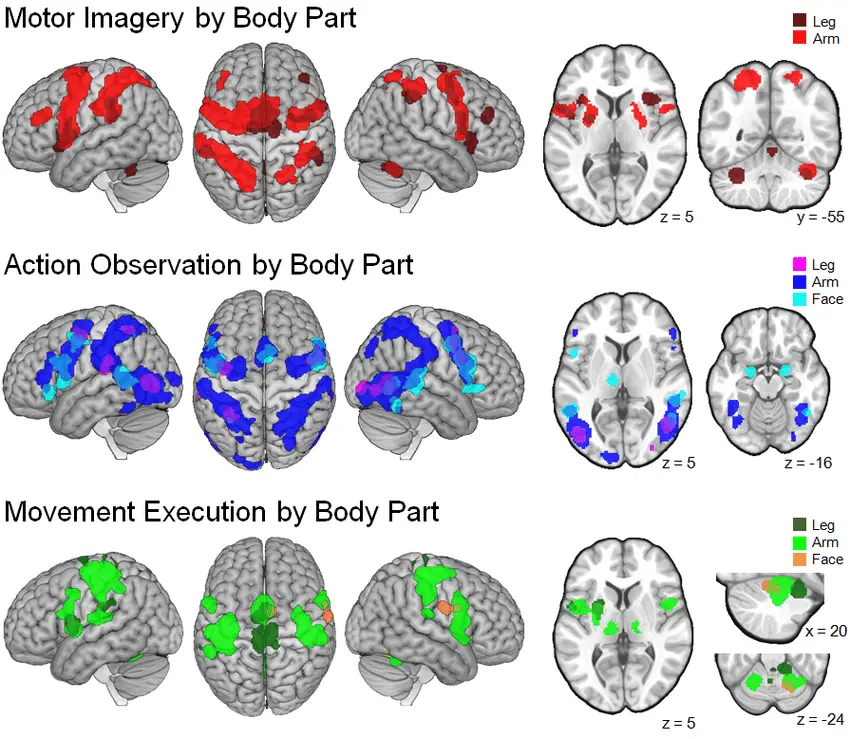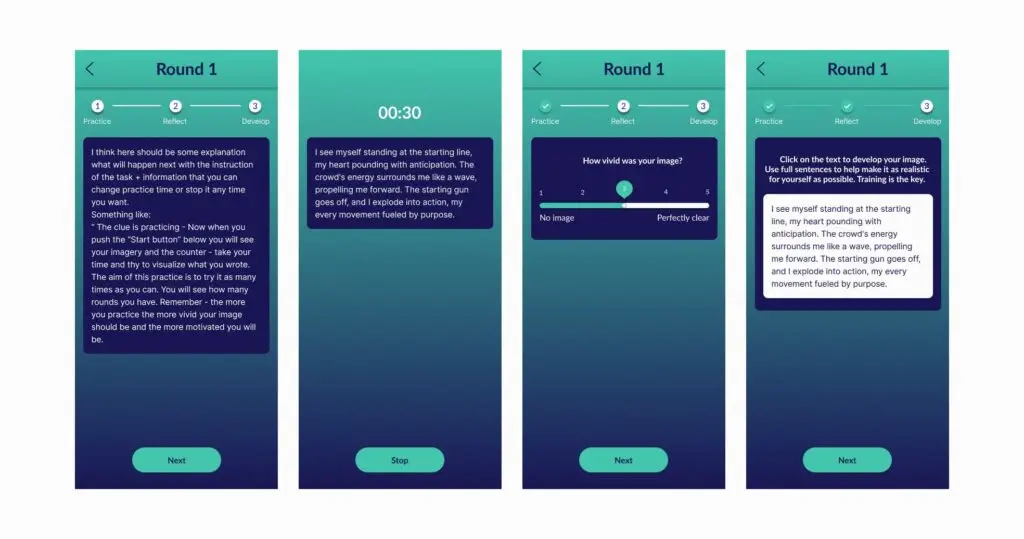How can you work on your public speaking skills with mental imagery?
Author: Ewelina Kurtys
Mental imagery is a powerful and simple technique that can improve various skills. No special equipment is needed, just your imagination and regular practice. Mental imagery involves creating or recreating sensory experiences in the mind without direct external stimuli. In practice, it means imagining something without actually doing it. The more vivid the image, the more effective the exercise is.
Effective imagery
To construct effective imagery for yourself, it is beneficial to incorporate key details: when, where, and with whom you will perform the action and, most importantly, how you will feel emotionally and physically during the performance. Emotional or physical elements can be more important depending on the nature of the task. For example, during public speaking, emotions are often the hardest to manage, so we need to work on them. During sports training, more emphasis could be put on physical feelings related to movement. Mental imagery comes easily to some people, while others may need more guidance or examples. The key benefit of mental imagery is that you can practice your skills wherever you are—when traveling, during a work break, or just on your couch at home.



Why is mental imagery useful?
Brain imaging studies have shown that when we imagine an action, we activate similar brain areas to those active when we perform this action in the real world. This reinforces the brain connections necessary to act. Researchers from Belgium and Germany have reported that MRI studies on people performing imagery for motor actions show that mental imagery recruits a network of brain regions similarly activated during actual movement execution, demonstrating the functional equivalence between imagining and doing. You can see this on the below Figure from this article. Green areas show where the brain gets activated during a particular movement, while red areas show increased brain activity during mental imagery of the same action. We can see that both green and red areas are very similar. This illustrates that mental imagery of an action activated similar brain pathways as real action.

Image Source: www.researchgate.net
Imagery in sports
Athletes often use imagery to improve motor skills. This works across different sports, and, not surprisingly, the more we practice, the better results we can achieve. It is necessary to recreate a realistic experience that we are truly capable of performing. Therefore, combining imagery with physical practice is more beneficial than using either method alone, regardless of skill level. This technique can be used not only in sports but also in other activities involving fine motor skills, such as learning to play an instrument, dancing, or drawing.
Mental imagery for emotional composure
Besides motor activities, mental imagery can also help us manage our emotions. By imagining challenging activities peacefully, we can reduce stress and anxiety, learn to regulate our emotions better, and improve our confidence. This can be very helpful in preparing for a public speaking event. Before going on stage, we can improve our ability to stay calm and concentrate on the talk by using mental imagery.
A comprehensive review from 1994 shows that performance visualization, or mental imagery, is an effective technique for reducing speech anxiety and improving public speaking performance. One method is to watch a skilled speaker, create a vivid mental movie of that speaker, and then replace the speaker in the mental movie with ourselves. This helps us feel more prepared and confident. Mental imagery of the whole process of an action is much more effective than just imagining the positive outcome of that action. Performance visualization works best for vivid imagers, meaning they can create clear and detailed mental images. To make imagery more effective, we can focus on specific aspects of the speech, such as vocal variety or gestures. Practice is the key and we have a reassuring quote from Ralph Emerson, american philospher of the 19th century.
Other applications
Mental imagery has many applications, including clinical conditions, which we will not cover in this article. It is used as part of Cognitive Behavioral Therapy (CBT) to treat anxiety and depression. It helps patients reframe negative thoughts and visualize positive outcomes.
Imagery protocol
To make mental imagery effective, we build a vivid image related to the action or situation we want to imagine. It could be a specific movement related to sports training, public speaking, or violin playing. Besides basic details such as when, where, and with whom the action is performed, emotional and physical feelings related to the activity are crucial. These need to be recreated by our imagination to help make positive changes to our brain pathways.
Consistency is key to benefiting from this training. It is recommended to perform imagery exercises 2-3 times per week for 2-3 weeks to observe their positive effects on our performance. Once you master one skill, you can move on to another one or continue improving the same task.
Success stories and a practical guide to using mental imagery
Many successful athletes use mental imagery to enhance their performance. Here are a few examples:
- Alex Deibold, a snowboarder who won a bronze medal in snowboard cross at the 2014 Winter Olympics in Sochi, Russia. His career journey is impressive, as he started as a wax technician for the U.S. team at the 2010 Olympics and transitioned to an athlete, ultimately competing in the X Games and World Cup events before retiring from competitive snowboarding in 2023. In this video made for the Brian Cain YouTube channel, he explains his imagery practice.
- Michael Phelps, a swimmer widely regarded as one of the greatest athletes in history, who won 28 Olympic medals. His coach acknowledges the importance of mental imagery in Phelp’s training
By looking at examples from top athletes, you can see that mental preparation is a crucial part of their success, and mental imagery is one of the techniques they use to achieve it.
Here is a video explaining the fundamentals of mental imagery by Sam Martin
To try it yourself, you can start with guidance from the Psync app. Apply for our app beta testing to experience the power of mental imagery! With Psync’s help, you can build your visual imagery according to science-based standards, track your progress, and practice consistently using reminders.

